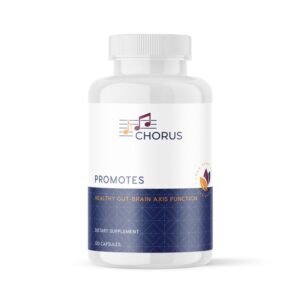This topic — like most in medicine — is not without controversy and I welcome your feedback. Please don’t misconstrue what I’m about to say as medical advice either general or specific. This information is merely for educational purposes.
The standard course of treatment for acute Lyme disease (the diagnosis of which you can see discussed here) is a 10-to-21-day course of antibiotics, usually Doxycycline or a similar drug, and is outlined here by CDC.
When used in a timely manner and for an appropriate duration this treatment is 80% to 90% effective and is one of the only times that Lyme can be said to be cured. Many patients do also utilize anti-microbial, biofilm-dissolving and neuroprotective Chinese herbal formulas during this time to increase their chances of a successful outcome, and following antibiotic treatment use formulas to heal the gastrointestinal system and promote a healthy gut ecology. Additionally, some patients who experience fatigue, pain, or depression following antibiotic treatment find Traditional Chinese Medicine to be exceptionally helpful to resolve their symptoms. For cases of chronic Lyme we use the term remission and make every attempt to ensure that remission is permanent.
Many patients who are not diagnosed or treated quickly enough for this standard treatment to be effective may still be prescribed antibiotics and may still experience some relief — but that relief is often temporary.
Chronic Lyme disease, AKA Post-treatment Lyme Disease Syndrome (PTLDS) is a complex and chronic polymicrobial condition which does not respond to the use of antibiotics and where antibiotics may in fact be dangerous. The name of this condition is under debate but I prefer to use the term chronic Lyme as there is ample evidence (1) (2) (3) (4) (5) available that shows lingering infectious issues in the body; and many patients who seek help for this condition have never been treated by antibiotics at all. To use the PTLDS term is an insult to patients who have never received treatment; and to those that have received treatment, it is implied that an infection is no longer present (this often is not the case). This term is a blatant disregard for the suffering many patients with chronic Lyme experience and often gives them false hope that the condition will resolve on its own.
Patients diagnosed with PTLDS often are prescribed antidepressants, pain medicine and psychotherapy and shuffled out of their doctors’ offices as quickly as possible. These treatments are seldom effective and leave patients feeling unheard, unwelcome and isolated.
The preferred treatment for chronic Lyme by many physicians and practitioners who advertise themselves as “Lyme-Literate” is the prolonged use of multiple-antibiotic cocktails with the intention of trying to hammer the infection into the ground for good. These treatments are also not supported by evidence and in fact evidence is available (1) (2) (3) (4) which points towards a significant amount of danger in engaging in this type of practice. The misuse of antibiotics in children may have an especially harmful effect (1).
Any Lyme patient who has received a prescription for one of these cocktails will likely recall the cringe on their pharmacists’ face when looking at the script. That is because pharmacists are well aware of the dangers of utilizing antibiotics for prolonged periods of time, as well as the potential for drug interactions due to polypharmacy.
So what is there to do?
The three factors involved that cause the long-lasting suffering endured by Lyme patients, and their solutions:
Borrelia and coinfections, and toxicity must be eradicated when possible. The reason we use the term remission is because the emerging evidence seems to indicate that some of these infections cannot in every case be completely elminated from the body. Borrelia in particular, because of its ability to hide behind a hardened, thick biofilm shell in a cystic state for decades, may not be possible to completely eliminate.
Because chronic Lyme is a polymicrobial condition — not just one organism that causes the debilitating symptoms many patients experience, but a cohort of coinfections and environmental factors — merely using antibiotics by definition cannot be effective. In future posts I’ll describe each coinfection and comorbidity of chronic Lyme in detail.
Nonetheless, fight we must. Traditional Chinese medicine is exceptional at reducing infectious loads of bacteria, viruses, mold/fungi, parasites, and other metal & chemical toxicities. The botanical substances utilized for the last three thousand years in China have a long, safe and successful track record of dealing with even the worst infectious epidemics in human history and are uniquely suited to tackling these kinds of diseases today.
In future posts I’ll discuss some of the key ingredients we use to fight infections, how they are synergistically combined to increase their efficacy, and the latest research which documents how they work in scientific detail. Simply put because these are botanical medicines — plants which have evolved in some of the harshest climates and environments on Earth — they have developed the ability to fight chronic infections from multiple vectors at once and are able to get around the problem of antibiotic resistance.
Because of the first factor, we must strengthen the constitution and immune systems of each chronic Lyme patient to keep them healthy once the infectious load is reduced. As many have experienced, each subsequent month or year that their condition drags on weakens them against further infections. They may catch every cold that comes along, get a food-borne illness from a communal meal which others did not contract, be highly susceptible to environmental factors such as climate or mold toxicity or heavy metal exposure, and have multiple chemical and/or food sensitivities which limit their ability to travel or even leave their own home. The weakened immune system of these patients also leaves them vulnerable to flares of once-thought-eradicated infections such as Borrelia. Because it can be difficult to eradicate Borrelia entirely with certainty, once its infectious load is reduced we rebuild the strength of the body’s immune system to keep any possible lingering nodes of infection at bay.
As an example, Many patients with chronic Lyme cannot produce a fever, and cannot recall having had one over 99.5 degrees Fahrenheit for decades. While it may be uncomfortable to experience, a major milestone for these patients is to experience a nice high fever as their body fights off an acute infection successfully.
Organ and tissue damage caused by the infections. The specific damage each major infectious and toxic vector of chronic Lyme can cause is an article I’ll write in the future. But to sum up briefly: microscarring, biofilms, and chronic infectious and toxic loads can reduce the function of the liver, kidneys, heart, lungs, digestive system, endocrine and nervous systems — every system of the body really. This must be repaired and Chinese medicine, due to its long history of working successfully with chronic degenerative conditions, is uniquely suited to be useful here. We have formulas which are able to influence gene expression for specific growth factors and restore detoxification pathways that are especially powerful in these situations.
Chinese herbal medicine is fantastically effective at addressing both the root cause of the suffering that chronic Lyme patients endure, and at relieving the symptoms.






